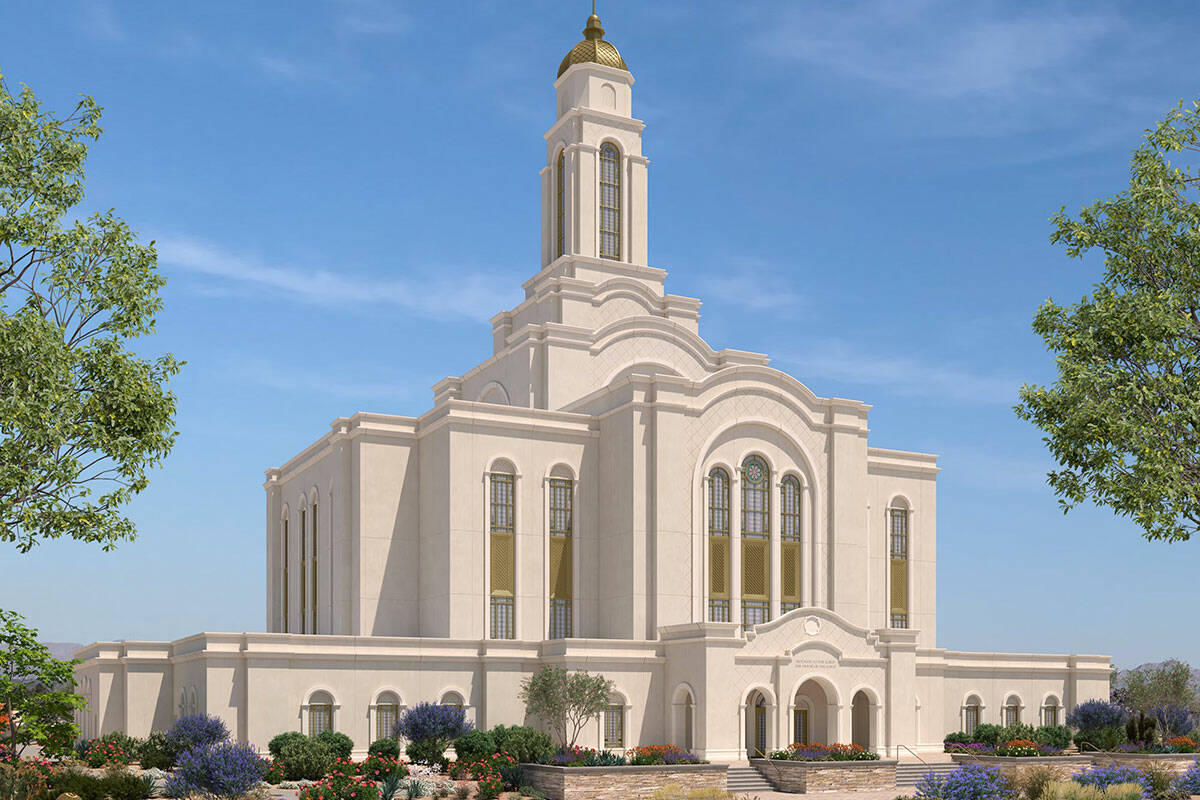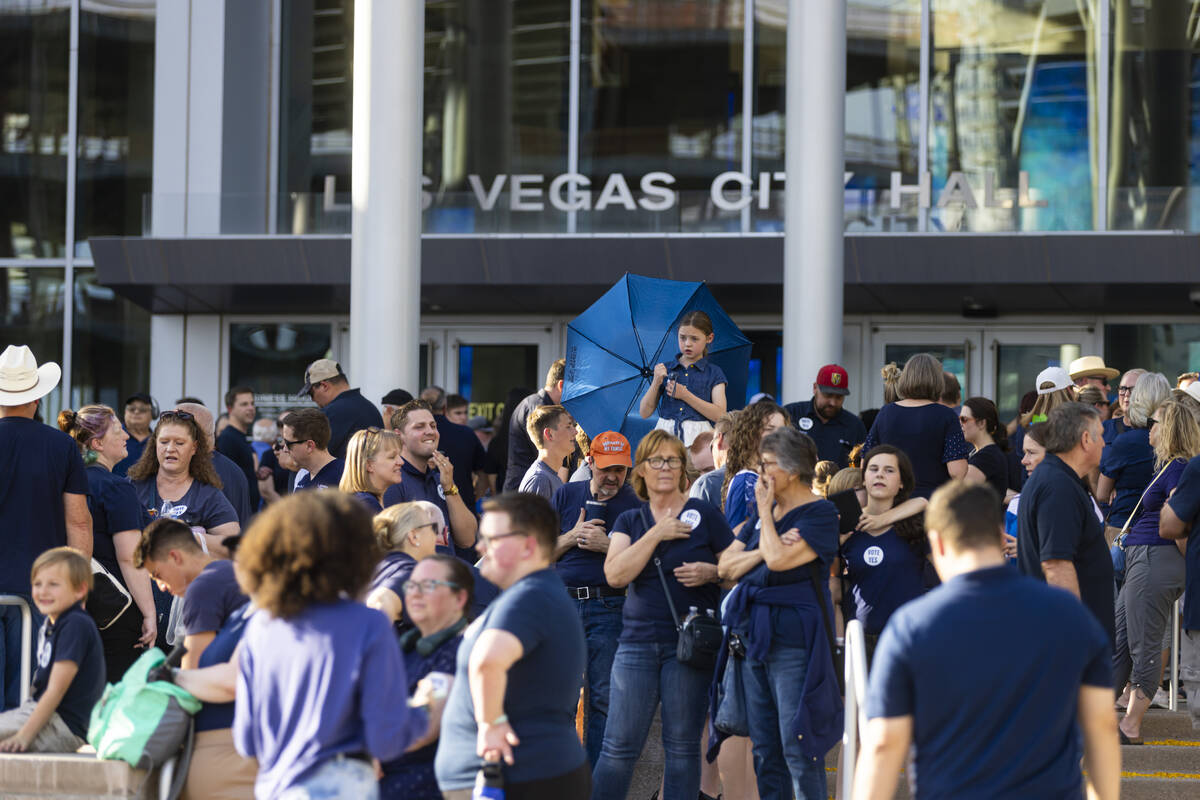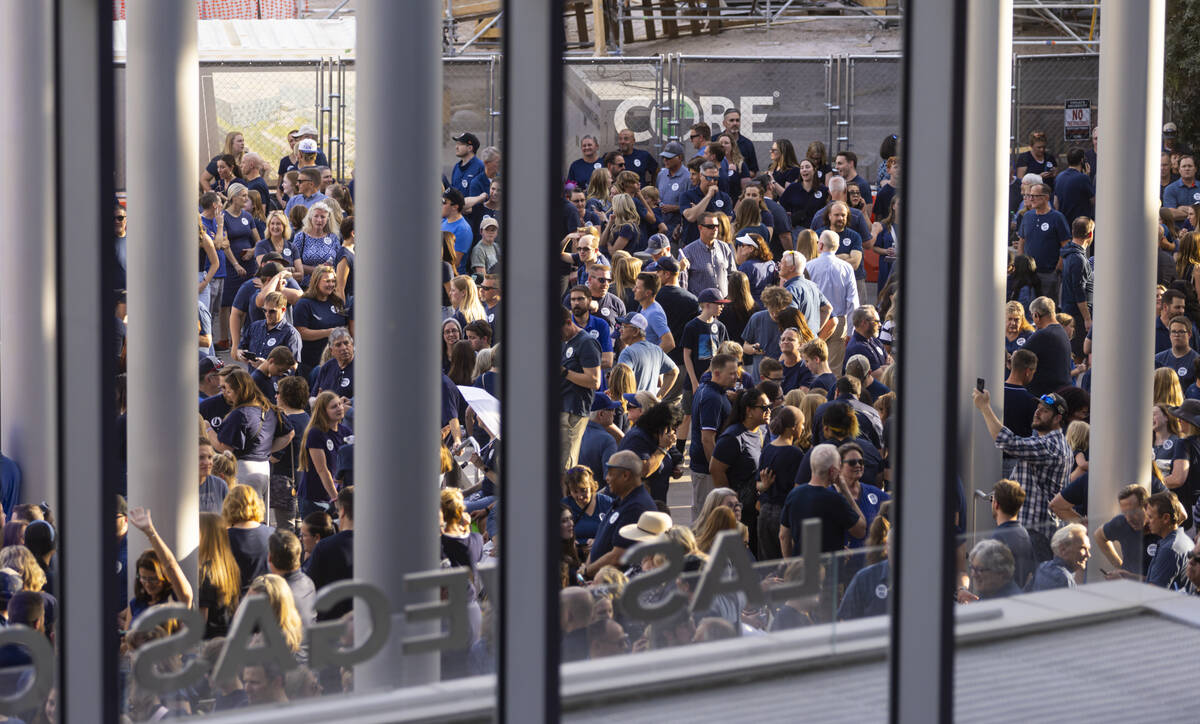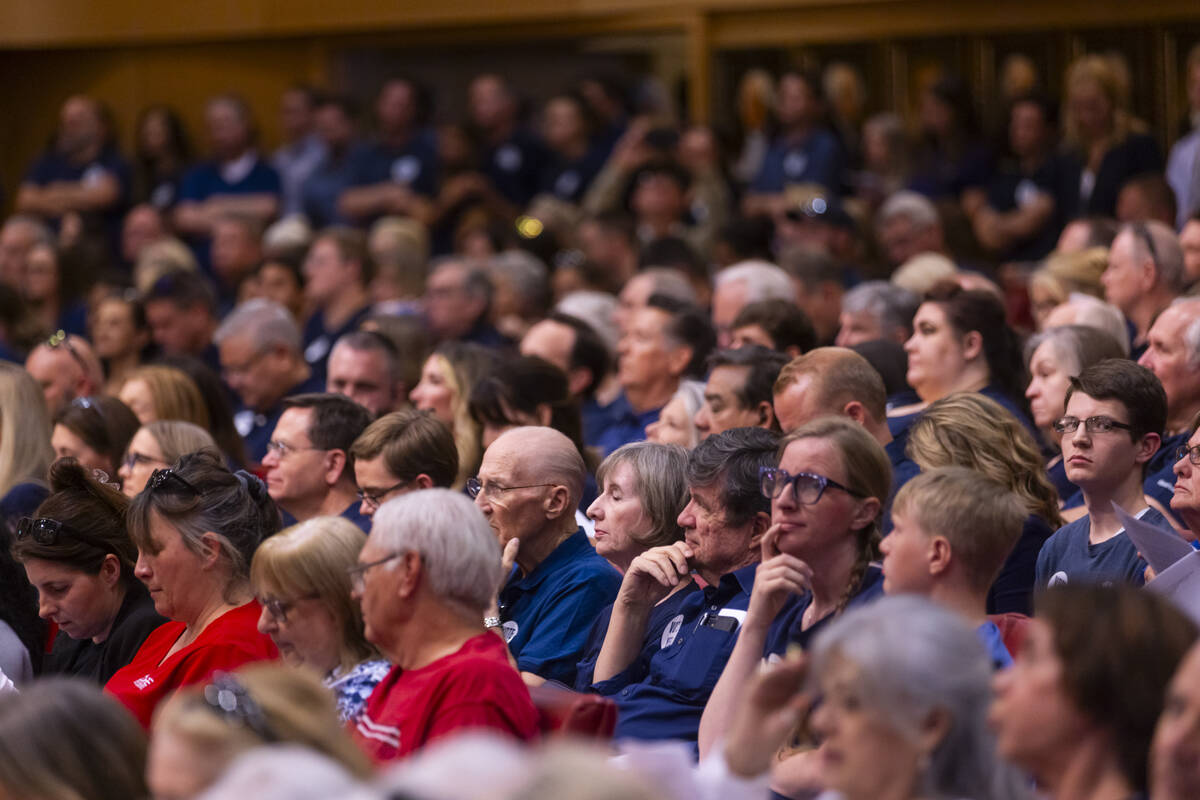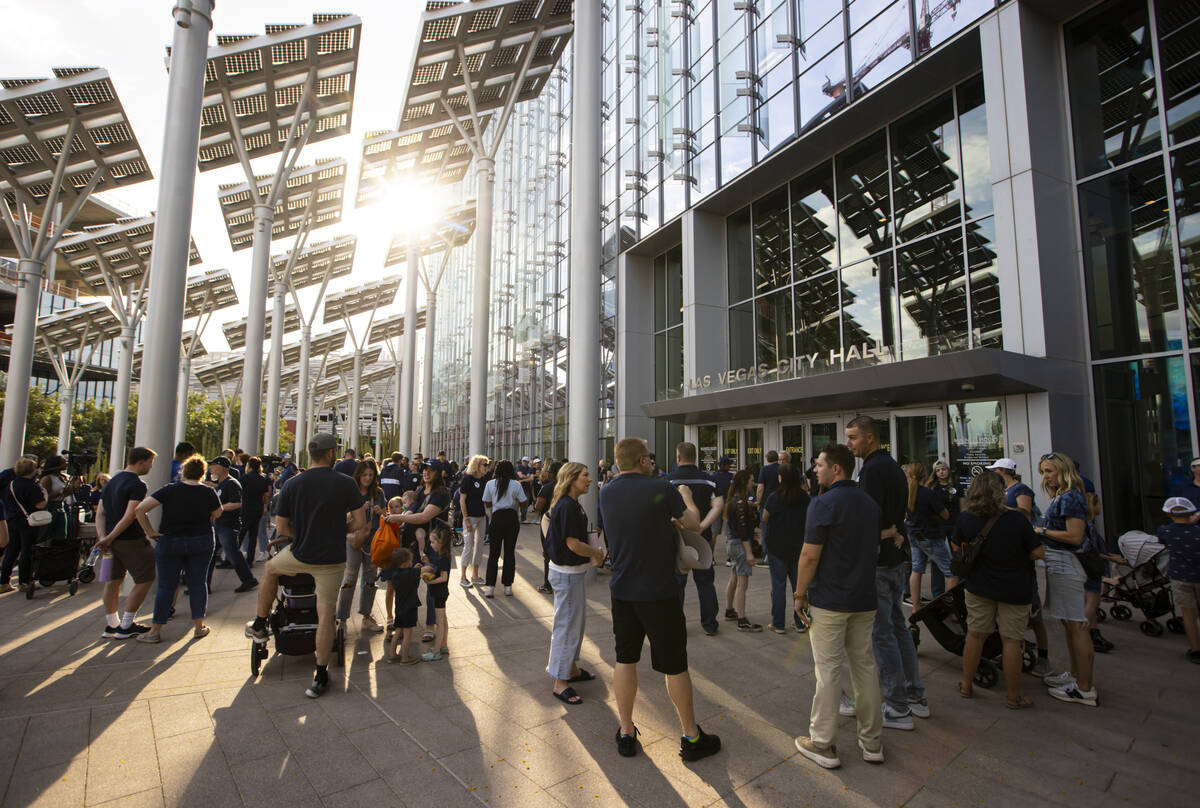Las Vegas LDS temple plan moves forward; foes plan to continue fight
The Church of Jesus Christ of Latter-day Saints’ plans to build its second temple in the Las Vegas Valley moved one step closer to reality after city planning commissioners approved the controversial proposal late Tuesday night.
By a 6-0 vote with one abstention, Las Vegas Planning Commission members approved a series of planning requests related to the proposed 70,000-square-foot temple in northwest Las Vegas near Lone Mountain, sending their recommendation to the City Council for final approval.
The commission’s actions — including approval of the site’s development plan, amending the city’s general plan designation and changing the land’s zoning classification — were met with excitement by supporters.
‘My heart is full, for sure’
“I’m feeling humbled,” Crystal Hirschi said following the vote. “I felt like we came to a really great common ground and I feel really grateful. My heart is full, for sure.”
But community members who oppose the proposal said they did not feel like commissioners listened to their concerns.
“I’m feeling motivated to continue this fight because we need to be heard. Our neighborhood needs to be heard,” said Katrina Corse, a longtime resident of the area.
Hundreds of community members crowded into the council chambers in downtown Las Vegas for the more than six-hour meeting, filling the space to maximum capacity. More gathered outside city hall and in an overflow room.
Jennifer Lazovich, a lawyer representing the church, told commissioners that the temple is not a “megachurch” or meant for large-scale gatherings, but rather is a place for “worship, reverence and sacred ceremony.”
Lazovich also told commissioners that the 216-foot height of the building, which has been a chief cause of concern among neighbors who say it will disrupt the area, would be difficult to change.
“While that can seem like an easy request, the answer is rooted in religious symbolism of the steeple height and lighting pointing towards the heavens,” she said.
Size, traffic, lighting concerns
But community members in opposition to the temple raised concerns about the size of the building and the constant lighting of the temple.
“This proposal is inappropriate for this area,” said Northwest Rural Preservation Association president Brigitte Solvie. “This association and who I represent is not against the church nor seeks to restrict its ability to practice their belief. This association is in opposition to the proposal as was presented.”
Others raised concerns about the effect increased traffic to the area might have.
“We are opposed to the impact that this will have on our community, specifically the impact it will have on the horse equestrian community,” Matt Hackley said. “We ride our horses on the streets. Cars and horses don’t mix.”
Others who oppose the proposal raised concerns about whether it violates a 2016 interlocal agreement between the city and the county that bars industrial or commercial development, or residential development over a certain size to be built in the area.
But city staff argued that the agreement is silent on amendments meant to allow for civic uses, including schools, government buildings and religious facilities.
Planning commissioners approved the requests with a condition that lights in the parking lot be turned off from 11 p.m. until 5 a.m., among other minimal changes.
The proposal also includes plans for a nearly 16,000-square-foot meeting house, an 1,800-square-foot maintenance building and an 1,800-square-foot pavilion and storage building.
Church officials have said the building, which would be the valley’s second LDS temple, is necessary because of the church’s increased membership and the valley’s population growth.
The existing temple on the far east side of the valley near East Bonanza Road and Hollywood Boulevard was dedicated on Dec. 16, 1989.
The proposal is set to be heard by the City Council on July 17.
Contact Taylor R. Avery at TAvery@reviewjournal.com. Follow @travery98 on X. Review-Journal digital producer Marvin Clemons contributed to this report.




